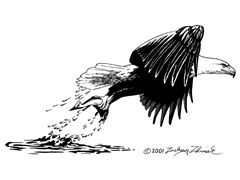Extension Wildlife & Fisheries Specialists Conferences
Date of this Version
October 2006
Abstract
Landowners and other wildlife enthusiasts often desire instant gratification when attempting to attract wildlife to their properties. Advertisements distributed by television programs, outdoor publications, and conservation organizations have played a large part in creating the desire for a quick and easy fix. Landowners are erroneously led to believe food plots or plantings of nonnative shrubs and trees will raise the carrying capacity for target wildlife species, even though the typical privately-held property contains overstocked, high-graded timber, intensively maintained croplands, mowed roadsides and drainage ditches, fire-suppressed woodlands, and pastures vegetated with non-native grasses that provide no cover and poor-quality forage. In North Carolina, state agency biologists and county Extension agents receive more requests for information about food plots than they do for information about prescribed burning or timber harvest. Although wildlife professionals now realize the importance of holisitic forms of habitat management (e.g., prescribed burning, creation of fallow habitats, establishment of native warm-season grasses), the food plot mentality persists. We suggest Extension wildlife specialists can help break through the food plot mentality by stressing native plant management and managing native plant communities, conducting research on food plots, not cost-sharing food plots, creating demonstrations of holistic management, preaching the limiting factor, training natural resource professionals that work directly with landowners, and acknowledging landowners that practice holistic management.


Comments
Published in Proceedings, 11th Triennial National Wildlife & Fisheries Extension Specialists Conference, October 14-18, 2006, Big Sky, MT.